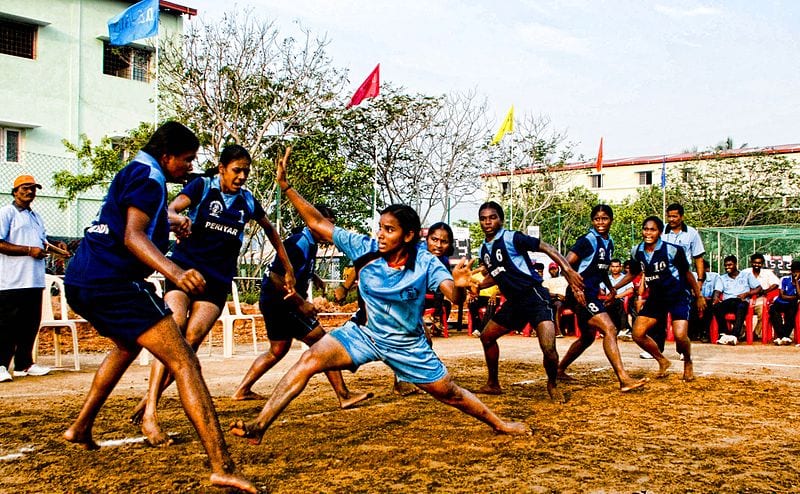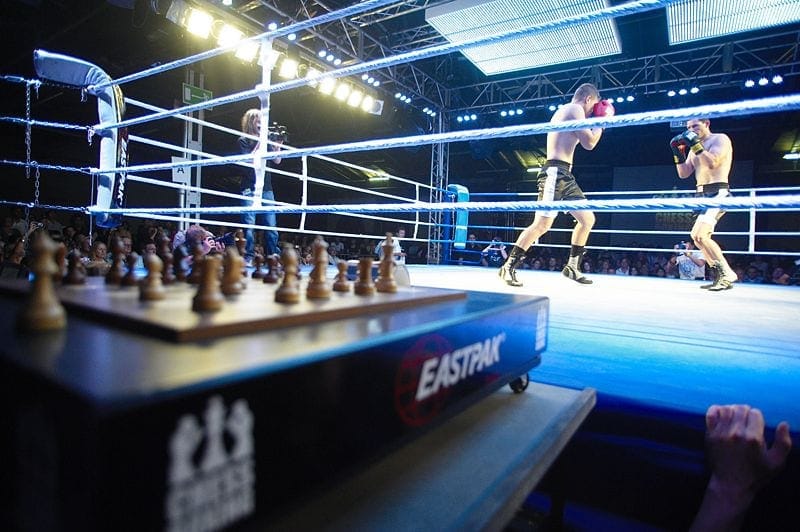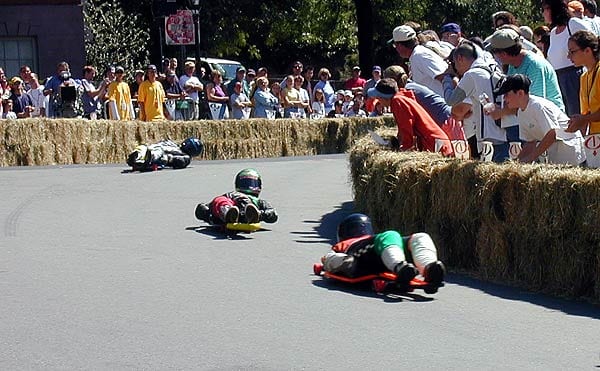We all know the big ones: soccer, basketball, football, hockey, gymnastics, swimming – we could go on and on about the different sports we follow each season or during the Olympics. Competitive sports have been around for centuries, each culture establishing and perfecting its own sport over time. Some of them have flourished and become global competitions, others are still preserved on a smaller scale in the countries where they were invented. Some are a big deal, some are just odd. Here are ten lesser known sports that caught our eye:
Kabaddi
Kabaddi, an indigenous sport to India, has been around for centuries, and there is currently a Pro Kabaddi league. The contact game involves seven players on each team and the idea is to score points by “raiding” the other team and touching its players. The player who is doing the “raiding” is called the “Raider” and must chant Kabaddi as he charges into his opponent’s side of the court. Kabaddi was first played at the Asia Game in 1990, and so far no teams has been able to knock India from the gold medal.

Underwater Hockey
Underwater Hockey began as a tool invented by the British Navy in the 1950s to keep divers fit. Since, it has evolved into a faster-paced game and has spread to 20 countries across the globe. Underwater hockey is played with six players in the pool and four subs who can dive in at any time. The idea is the same as hockey: use your stick – this one much shorter – to get the puck into the opponent’s net. There are three forwards and three backs. Each game has two 15-minute halves and a three minute halftime.
Chess boxing
A true combination of body and mind. Chess boxing was created in 2003, and that same year, the World Chess Boxing Organisation was founded and the first world championship fight took place. In Chess boxing, the game starts with chess, and is interrupted by bouts of boxing. A winner is declared by either a knockout in the ring, checkmate on the board, judge’s decision or exceeding the amount of time allotted to the chess game (9 minutes per opponent).

Wife Carrying
Wife Carrying originated in Finland and is based on an old tale, which has three versions and all involve Herkko Rosvo-Ronkainen, otherwise known as “Ronkainen the Robber.” Some of the stories tell of his robbers stealing wives and carrying them while running away. Centuries later, the first modern competition took place in 1992. There are now wife carrying championships and competitions all over the world, but Finland has dominated as of late, winning seven World Championships between 2009-2015.
Yukigassen
Think of Yukigassen as an organized snowball fight. The term itself, yukigassen, actually means “snow battle” in Japanese. The first tournament was developed by the Japanese in 1989 as a way to draw tourists during the colder months of the year. Now there is an international body, founded in 2013, and includes countries such as Sweden, the Netherlands, USA, Canada, Russia, Finland and Norway, just to name a few. The game itself consists of seven players per team, two subs and a coach. It’s a best of three sets to win the match, each set lasts for three minutes. How do you win a set? You must eliminate as many players from the opposing team by hitting them with snowballs or capture the other team’s flag. Each team gets 90 snowballs per set.

Korfball
Korfball is like another version of basketball, except there are eight players per team, the basket is higher and there is no backboard. Each team has four men and four women, and is divided into two groups of four, each involving two members of each sex. Each group then has a “section,” offense or defense, and they switch every two baskets allowed. The game originated in the Netherlands in 1902, and there are currently over 100,000 players in the European country. There is an international governing body as well as regional associations.
Underwater wrestling
Underwater wrestling, also known as Aquathlon, is just what it sounds like, wresting underwater. The two opponents wear masks, fins, ribbons and ankle bands, and can wrestle underwater or at the surface. The winner is the wrestler who seizes the ribbon from his opponent. Aquathlon was recognized by the World Underwater Federation as a “sport discipline” in 2008.
Street luge
You can look at street luge in two ways, one like luge on concrete instead of ice or, two, skateboarding on your back. There is no definitive story as to how and when street luge was invented, but it’s considered one of the more extreme sports. Think of it, you’re flying down a hill at speeds reaching 100 kilometers per hours, with just a board and wheels between yourself and the concrete, would you give it a try?

Camel Racing
Think of it just like horse racing but with camels. Camel Racing is an ancient Arabian tradition, but now has a modern twist and is actually a million dollar industry enjoyed mostly in the Middle East. Human jockeys, most of them children, were outlawed in the UAE in 2002, and now small robots with walkie talkies sit atop the camels as they race through the desert. The racing tracks are anywhere between 1.5 kilometers and 8 kilometers.
Sepak Takraw
Sepak Takraw is a Southeast Asian sport which combines soccer and volleyball. Several countries claim the sport as their own. The court is the size of a badminton court and the net is about 1.5 meters high. Each team has three players who have three volleys to get the ball, originally woven from rattan but now are synthetic, over the net. The game itself is similar to Footvolley, a game combining soccer and beach volleyball and is spreading around the world.














